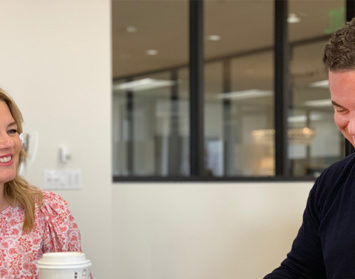3 Things to Consider, Other Than Rate
“We got a great deal!”
What business owner doesn’t love saying those words? And lately, in commercial real estate leasing, we have seen some really great deals! But what does it mean to get a great deal? Is the best measure of a good deal versus a bad deal the negotiated rental rate? That seems to be what everyone talks about – the papers report on it, the brokers advertise it, and business owners compare theirs with their neighbors.
But this lease rate myopia is dangerous. The rental rate is just one component in a commercial real estate transaction, and it only tells part of the story. Here are three provisions, in addition to the negotiated rental rate, that can help to define a truly a great deal.
A Way Out
Most business owners are optimistic, bullish, “up-and-to-the-right” kinds of people. Their enthusiasm and drive will likely carry the business forward on a path of growth and opportunity, sometimes including big and bold facility decisions. One of the roles of a good advisor is to ask “what if?” What if things change, for the better, or for the worse? What if you want to sell your company and the acquiring group doesn’t want the building? How would you get out of the lease?
A termination right is a great option, especially on a longer term lease. It gives you an immediate off-ramp, with a known cost, and a way to evaluate, plan and execute in your business without a lot of uncertainty around subleasing costs and recoveries. Landlords will resist, but from the Tenant’s perspective, a termination right can be one of the most important negotiated terms in a lease.
Notwithstanding, you should always have a right to sublease. A sublease is the most common way out of a lease ahead of the scheduled lease expiration, and you will want to pay careful attention to the language of those sublease rights. Does the landlord forbid you to sublease to another tenant in the building, or to any company that they are also negotiating with? Do they limit the sublease rate you can charge? This kind of language can be very damaging, and except in extreme circumstances it should be stricken from any lease, as it directly limits a company’s most basic right to mitigate their financial exposure.
Landlord Warranties
We have all heard the phrase “you get what you pay for.” Generally, a brand new building will cost more, and is worth more, than an aging facility. But most lease transactions fall somewhere in the middle, with companies leasing second generation space in a building that may be 5-15 years old. Landlords love the expression “as is,” so how do you protect against the hidden cost and risk in an aging building?
A qualified advisor can negotiate landlord warranties for various elements of the building and property. You don’t want to sign a five-year lease for a building where the roof or the air conditioning units won’t last that long. Does the landlord pay for those replacements? If so, do they just pass the cost through to the tenant? HVAC can often be repaired instead of replaced, but how many days without air conditioning should a tenant have to tolerate before the landlord bites the bullet and replaces the units?
A good advisor will be constantly updating and revising their documentation for landlord warranties and tenant protections. For example, there is an increasing occurrence of a microorganism known as MIC that can grow inside a sealed sprinkler system, corroding the pipes from the inside out. You will know you have it when your pipes spring pin-hole leaks and rain down on your employees and equipment – not a good thing. We have added language to our base documents to protect against this, and we are adding sprinkler system inspection to our up-front building due diligence.
“Additional” Rent
There is an insidious defined term “Additional Rent” in most every lease you will see. This term should immediately set off alarm bells as you read the broad definition of additional expenses that can and will be included on your monthly billing statement as Additional Rent. How much might you pay in Additional Rent? Additional Rent can include some or all of the building operating expenses, property taxes, insurance, maintenance, utilities, upgrades and myriad other foreseen and unforeseen expenses in the operation of a building. In some leases, the Additional Rent can be 40%-60% of the total rent check a tenant writes.
The good news is that there is a significant opportunity for savings across the board for businesses in San Diego, and we have hired a 20-year veteran of asset and building management to help our clients to realize these savings. Ed Muna, formerly with Lankford & Associates and Southwest Value Partners, is now running Hughes Marino Lease Audit Services (LAS), helping local companies to make sense of their monthly rent billing statements and the year-end reconciliation statement. Most companies see these statements, know that they deserve some level of scrutiny, and likely hand it off to a finance team member to review. But even the CFO will have difficulty evaluating these statements if they don’t have a background in commercial building operations. There are no GAAP regulations governing commercial building allocations of operating expenses, and there is broad discretion exercised by property landlords on how expenses are handled. It requires a blend of financial acumen and commercial building operations experience to evaluate these statements. There is also the specific negotiated language of the lease, which typically varies from tenant to tenant. With Hughes Marino LAS, we are developing a new standard for operating expense treatment, and we are finding real estate savings for our clients in new and important ways throughout the life of the lease.
A commercial real estate lease can run fifty pages or longer. Some of the language in the lease protects the tenant, but most of it protects the landlord and their income stream. While rental rate is important, there are a lot of other ways that a real estate lease costs the tenant money. Read the entire agreement, hire a good advisor, and get yourself a truly great deal that enables your business to grow in San Diego.
John Jarvis is an executive vice president of Hughes Marino, a global corporate real estate advisory firm that specializes in representing tenants and buyers. Contact John at 1-844-662-6635 or john@hughesmarino.com to learn more.








